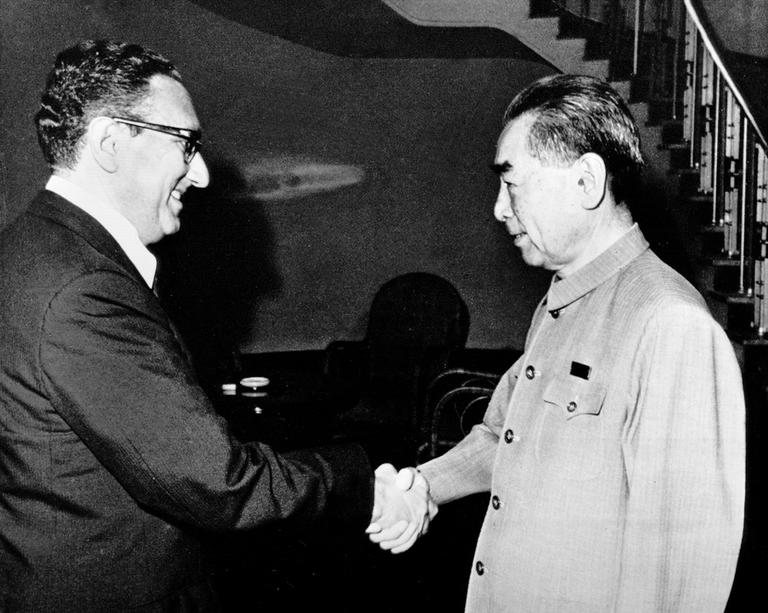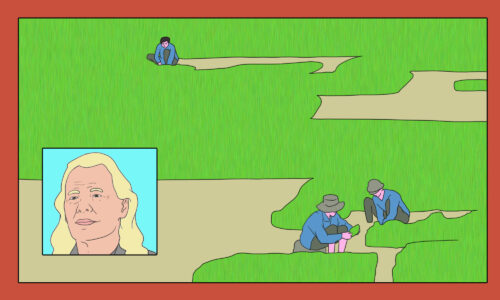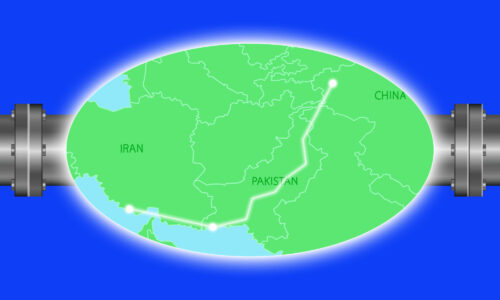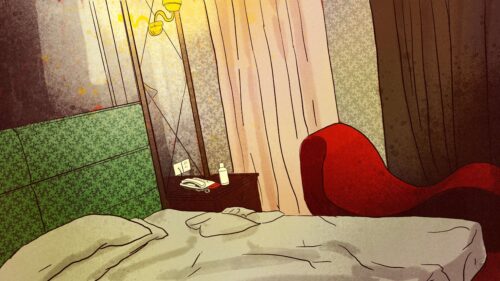This Week in China’s History: July 9, 1971
A principal adviser to the president of the United States, traveling abroad on a fact-finding mission overseas, falls ill, suddenly and unexpectedly, in the midst of a state dinner. Exhaustion and an unfamiliar diet is blamed. To recuperate, his hosts take him by motorcade to a remote villa in the hills, far from the city’s heat and from the relentlessly inquisitive press accompanying the mission. Two days later, the envoy emerges, well enough to continue his itinerary.
This is what was said to have happened in Pakistan on July 9 to 11, 1971. But that is not what happened, as was revealed soon after. The truth is, that envoy took a detour that changed the direction of many histories profoundly.
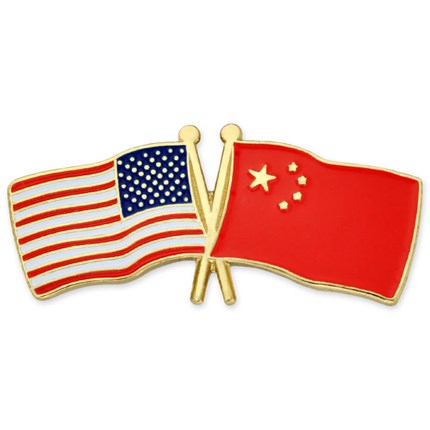
In 1971, there were no formal relations between the United States and the People’s Republic of China, founded in 1949. The Korean War had put soldiers of the two countries in combat against one another, and the enduring image of Sino-American relations during this era was American Secretary of State John Foster Dulles rejecting Chinese Premier Zhōu Ēnlái 周恩来’s outstretched hand at a 1954 peace conference in Geneva.
The United States perceived China and the Soviet Union as a unified bloc. Although the two Communist powers had been allies, their relationship had grown tense since the late 1950s. By the mid-1960s, amid the turmoil of the Cultural Revolution, Máo Zédōng 毛泽东 was considering how to improve relations between China and the United States to offset the increased threat of the Soviets. The Soviet invasion of Czechoslovakia in the summer of 1968 intensified ’s fear of Soviet expansionism.
That the so-called Communist World was not only divided, but deeply so, became apparent to U.S. observers in early 1969, when border disputes between China and the USSR came close to full-scale war. Dozens, at least, died on both sides in fighting over disputed islands in the Ussuri River. Soviet generals even considered launching a nuclear strike against China, according to the research of historian Chen Jian. The Chinese leadership was willing to compromise its ideological foundations to find a strategic partner.
The United States was in the same boat. Although it didn’t face hostile neighbors, a long and costly war in Vietnam had been just part of the global Cold War it waged with the USSR. An alliance, or at least a rapprochement, with China might break the Cold War stalemate.
But with no diplomatic ties, attempts to open communication were awkward, conducted through third parties like Pakistan, France, Poland, and Romania. The efforts were sometimes comical: American embassy officials in Warsaw, directed to communicate President Richard Nixon’s desire for further negotiations but not knowing for sure what their Chinese counterparts even looked like, tracked down Chinese diplomats as they exited a fashion show at the Yugoslavian embassy in Poland, shouting, in effect, “Call us!”
The ping-pong diplomacy of April 1971 was just the public tip of a diplomatic iceberg. More than 100 secret meetings had taken place between the two sides by the time the U.S. table tennis team went to China. “Yanks in Peking!” celebrated the cover of Time Magazine, but at the government level neither side wanted to risk public rebuke by extending its hand until it had confidence that the other would be receptive.
The breakthrough came in an April 1971 message from Zhou Enlai, which read in part, “The Chinese government reaffirms its willingness to receive publicly in Peking a special envoy of the U.S. (for instance, Mr Kissinger).”
Arrangements for Kissinger’s visit were completely secret. Even the American State Department was cut out of the loop after diplomats expressed concern about the repercussions of establishing relations with the PRC. Pakistan — itself embroiled in violent civil unrest that would split the country — was the medium.
The first part of the scheme was distraction. Kissinger left July 1 on a fact-finding tour of Asia, designed to be as dull and grueling as possible. A week of travel, including stops in Guam, Saigon, Bangkok, and New Delhi, preceded Kissinger’s arrival in Islamabad. By that time only one American reporter was left on the trip.
Pakistani President Yahya Khan had taken the lead in facilitating the connection between the Americans and Chinese, and he enabled “Operation Marco Polo” to be put into motion at a dinner welcoming Kissinger. During the dinner, overwhelmed by “the enervating heat of the subcontinent” and his grueling travel schedule, Kissinger took ill. Yahya Khan insisted that Kissinger be taken to a former British colonial hill station, now a government villa, called Nathia Gali, several hours’ drive from Islamabad. Some 8,000 feet in elevation, the cool climate would give Kissinger a chance to recuperate before resuming his trip.
Neither the international press, Nixon’s cabinet, nor the U.S. embassy staff that had joined Kissinger at dinner knew that the Pakistani government limousine that went to Nathia Gali was a decoy. The details of the “side trip” to China for a “principal traveler” were laid out in a secret memorandum, later declassified and published (along with many valuable documents) by the National Security Archive at George Washington University: “[B]e prepared to take steps to prevent embassy doctor from going to hill station, best way for that would probably be for Halperin to call Saunders from field station to effect that principal traveller is relaxing, feeling better, wishes to be left alone, will call doctor if needed.” The ruse was so thorough that Kissinger’s entourage kept three different calendars, to be shared with different members of the trip, to maintain the illusion.
Meanwhile, Yahya Khan’s private driver took Kissinger, three top aides, and two secret service escorts to a military airfield. By the time the Americans arrived — delayed by some misplaced car keys — it was nearly 4 a.m. Kissinger wore a large hat and sunglasses as he exited the limousine and made his way to the waiting Pakistani Airlines 707.
As the Americans climbed the stairs onto the jet, they were surprised to find that the plane was not empty. Already seated were four Chinese representatives, who had been waiting aboard for many hours while the plan was put into effect. Once secret service fears of a kidnapping were allayed, the plane began its six-hour flight to Beijing.
Once in the air, a new crisis arose: amid the secrecy, Kissinger had forgotten his bag, leaving with no clothes except what he was wearing. Kissinger had no choice but to borrow a shirt from an aide, John Holdridge, who was six inches taller. Photos of the next two days show Kissinger wearing the shirt several sizes too large…and made in Taiwan to boot!
The plane touched down at Beijing’s Capital Airport at midday on July 9 and was met by General Yè Jiànyīng 叶剑英. Over the course of 48 hours, the two sides discussed the Soviet Union and the war in Vietnam, but most crucially for Nixon’s planned visit to go forward, the American side affirmed that it “supported neither two Chinas, nor one China — one Taiwan, nor an independent Taiwan.”
Kissinger returned to Pakistan, driving back to Islamabad via a circuitous route to feign returning from the resort at Nathia Gali. Concluding his talks in Pakistan, Kissinger made a final stop in Paris before returning to Washington.
The meeting remained secret for just a few days. On July 15, Nixon announced on American television: “Knowing of President Nixon’s expressed desire to visit the People’s Republic of China, Premier Chou Enlai, on behalf of the government of the People’s Republic of China, has extended an invitation to President Nixon to visit China. President Nixon has accepted the invitation with pleasure.”
Nixon would arrive in China for his historic visit just seven months later.
Given the enormous impact of China’s rise, sometimes forgotten in this story was that the PRC’s gains were Taiwan’s loss. “No government ever less deserved what was about to happen to it than Taiwan,” Kissinger would write in his memoirs. In less than a decade, the Republic of China changed from being a world power and close treaty ally of the United States with a permanent seat on the United Nations Security Council to a territory in diplomatic limbo, neither a country nor not a country. Given the pace of change in the 1970s, few would have expected that nearly 50 years after Kissinger’s visit, Taiwan’s status would remain unresolved.
There’s no denying that relations between the United States and China today are bad. More and more frequently, commentators are describing them as at their “lowest point since Nixon went to China,” or words to that effect. So perhaps it is helpful to remember a time, 49 years ago this week, when the two countries managed to work together — in total secrecy — to ensure a history-making event. When Nixon landed in Beijing seven months later, it was the first time a sitting U.S. president had ever visited China, setting in motion the world as we know it today.
This Week in China’s History is a weekly column. Last week:
